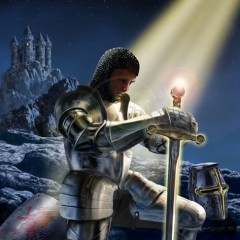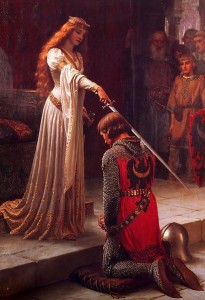
On my kindle, I’ve just started reading Jedi Manual Basic – Introduction to Jedi Knighthood. After the first chapter you are given a writing assignment.
Below are the instructions given in the book. Under that I’m sharing my essay with you.
Maybe you’ll agree and maybe you won’t, but these are my thoughts on the reading and the research that I’ve done. At any rate, I hope you enjoy it.
Based on the reading assignment and any other research, describe in approximately 700 words the history of the medieval knight, the knightly code, and examples of some knights of history. Is a knight someone who always lives up to the standards set for them?
Also research the story of King Arthur and the Knights of the Round Table. Describe how the ideas of freedom and equality in this tale are interwoven into the idea of the knight and knightly behavior.
The history of the medieval knight is not as linear as one might think. In fact, the knightly code is even less linear. Over the years, some common themes have emerged but recently with Hollywood’s resurgent interest in the knight, the history and honor of the knight has been muddled and, to a point, become more shrouded in myth than ever.
In the 11th century, knights were mere foot soldiers, but it was in the 13th century some 200 years later, as the Iron Age developed better weapons and armor, that some of the more reliable knights became tasked with defending their kings and lords of the realm. Around the 15th century knighthood reached a pinnacle in warcraft and weaponry. From this time, through the 17th century, the art of being a knight changed from just the art of fighting into a code of conduct and chivalry that we think of today.
There were two ways to become a knight: to be born into it or to be knighted though bravery on the battlefield. The latter being a very rare occurrence, albeit the one Hollywood likes the best. The former was much more common. At age 7, boys of noble birth – by either bloodlines or wealth – would be sent to the lords court to become a page.
In the lords court he would learn the rules of the court, chivalry, weapons, writing, and art. The next step from page was to become a squire or “knight in training”, where around the age of 13, training would focus more on weapons, horsemanship, and combat. During the Knighting Ceremony, the squire would discuss chivalry, courage, and the nature of being a knight. He’d also receive presents such as a sword and armor and would swear allegiance to G-d or the lord of the realm. The step up from squire to knight differs so greatly depending not only on where you were but what you believed that it’s not something I’m going to get into.
I’ve thrown the word chivalry around a few times, and it’s always used in the context of knighthood. But what does it mean?
Chivalry simply comes from the French word “chevalier,” the ambassador of “la chivalry” (chivalry), and it’s rooted as the French word for horse “cheval,” but it didn’t stay simple. As “chevalier” originally meant horsemen and during the 13th century knights were usually mounted, the definitions became muddled to be one in the same. Chivalry has since come to be the term used for the knightly code of honor.
This honor code depends on where you are and what you believe. There is a very real dichotomy between knights of religion and knights of the realm and that, coupled with location, has spawned many versions of the knightly code. However, most contain the following virtues:
- Courage
- Justice
- Mercy
- Generosity
- Faith
- Nobility
- Hope
The most famous of knights sat in King Arthur’s court as Knights of the Round Table. Two of those such knights are fictional. Sir Lancelot didn’t exist outside of the tales of the Round Table. Over the years and through the tales, however, he exemplifies courage in a knight. Sir Galahad was another who didn’t exist but also perfectly embodied hope and faith.
Although two of the more famous Knights of the Round Table were fiction, King Arthur and his knights did, in fact, exist. The Round Table was founded in patience, humility, and meekness. The real and fictional tales of the Round Table have been passed on because they stand for things that will last until the earth is no more – Always help women/damsels in distress; keep thy word to all; know good from evil; and, among many more, thou shouldst not fail in these things: charity, abstinence, and truth.
These are the things that we think of when we think of knightly behavior. And it stands to reason that Lancelot and Galahad didn’t exist because most knights are human. The knightly code isn’t impossible to follow, but to strictly adhere to it could be. After all, we are human.
Through all of this, I can say that a knight who encompasses all seven virtues, knows good from evil, and helps damsels in distress but has a few shortcomings is still a knight. Maybe not one remembered by history, but I’m sure in their time knights like that saved many people and protected many realms for their lords or their G-d, upholding the freedoms of their people.

